
Located in the mountain in the west of Xiaohuangtang Village, Wudian Town, the Xiaohuang Cliff stands bolt upright with the shape of a crouching tiger roaring to the sky. According to historical notes, Crown Prince Xiao Tong, the son of Emperor Liangwu in the Southern Dynasties, marveled at the precipitous Cliff during his visit to the mountain. From then on, the Xiaohuang Cliff became famous far and near.
Climbing along the zigzag stairs, you will see such scenic spots as the Two Pines Greeting Guests, the Kangwo Pavilion, the Wugong Pavilion and the Luanshi Platform. And you will be attracted halfway by two grotesque stones at both sides of the Ma’an Pavilion. The left one, called the Shizi (Lion) Rock, resembles a lion facing the east, while the right one, called Qiangqi (Pennon) Rock esembles three signal flags inserted in the back of the war robe in the drama. If you keep climbing from the Ma’an Pavilion, you will come across the natural barrier of the steep Eighteen Curves accessible by one foot path only.
2.Zhugong Cliff
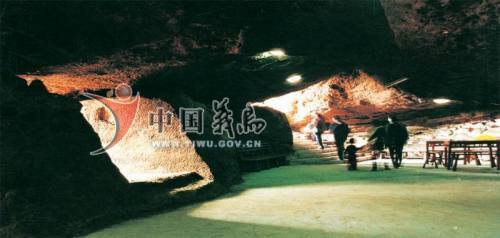
Zhugong Cliff, located at the foot of the Wuyanshan Mountain in Huaxi Village, Niansanli Town, is actually a cave. According to the old legend, a monk once carved the words of “Zhuyang Cave” here, which is commonly referred to as Zhugong Cliff.
Surrounded by mountains in three sides, Zhuyang Cave faces the west. On the rock wall at the top of the entrance there are such carvings as “Yun Shan Shi Shi” and “Su Shi Zhen Liu” by Magistrate Zhou Shiying in the Ming Dynasty’s Wanli Period and the owner Yu Guoqi of the Zhuyang Cave, and also “Yun Fei” and “Chan Yan” by Yu Enshou in the Qing Dynasty’s Qianlong Period. Inside the Cave there is a network of caves. The largest one, huge and bright, 10-meter deep, 5-meter wide and 2-meter high, covering an area of 50 square meters, could accommodate 100 people. In addition to the Hugong Temple and Guanyin Temple, there are rocks of various shapes, namely, stone mortar, stone pillow, stone bed, stone drum and etc.
Zhugong Cliff has attracted numerous tourists in different eras with its caves and stones. An ancient praised it as “a nature’s creation”.
3.Songpushan Mountain
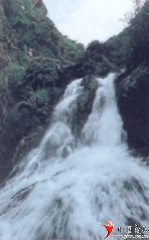
The Shuangfengshan Mountain, located in Dongzhu Villiage, Chi’an Town, also the highest peak in Zhejiang area, is part of the north Shuangfengshan Mountain. Climbing along the quiet path to the halfway and walking down a left-side path, you will see the Qiaoxia Gorge. The steep cliff, with only one foot distance between two sides, has its bottom separated by three huge rocks. One spring comes out of the gorge, making a 100-meter-long waterfall striking the rocks. There are four elegant words by people of the Song Dynasty, namely, “Song Pu Quan Shi” (pine trees, waterfall, spring and stone), caved on the stone wall at the entrance of the Gorge, barely visible with age. You could also see other stone carvings describing the scenery.
Walking out of the Qiaoxia Gorge and keeping climbing for 50 steps, you’ll come to 1000 stone stairs, known as the ancient battle pass of “Bai Bu Jun”, which are so steep that you will see the soles of the climbers ahead of you.
The ancient Shengshou Temple might be a strange name to young people, let alone its brilliant history and charming resorts. But it will only take you one day to get to know it and even admire it.
Located halfway of the Fulongshan Mountain, around 20 kilometers to the north of Chengxi Community, Yiwu city, the Temple entrance is next to the highway. The couplets on the stone pillars at the entrance, obvious to visitors upon arrival, tell people not to miss the sacred place with charming scenery. Walking inside and climbing along the stone stairs, you will see the Shengshou Temple after the Buyun Pavilion, the Lianjing Pavilion and the Bell Tower. Established in the early Tang Dynasty, the quiet temple attracted such scholars as Song Lian and Fang Xiaonuo to write books and give lectures here. After several destructions and renovations, the Temple, rebuilt in recent years, only keeps such ancient relics as the Shengshou Temple stele, the stone arhat, the pedestal of the stone pillar and the Bairu Spring of the Yuan Dynasty. But the centuries-old yacca, revived after death, is a true miracle.
The 600-year-old yacca, withered as a result of deliberate torture in the Cultural Revolution, saw sprouting leaves in the spring of 1987. With a hollow root broken to pieces and a shiny trunk, the yacca has two green branches sticking to the sky.
After climbing to the Lianjing Pavilion, you will be able to enjoy a surely wonderland view of the ancient temple, the green mountain and the Changyan Reservoir in the breeze.
5.Huaxi Forest Park
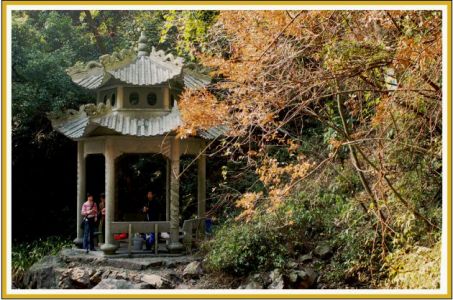
Huaxi Forest Park, a provincial tourism project, has been listed as a city-level priority project.
Located in the northeast of Niansanli Community, at longitude 120°11’33”to 120°14’44” east and latitude 30°20’9” to 30°24’45”north, the Park, part of the Huijishan Mountain range, covers an area of around 22 square kilometers with a subtropical climate of sufficient sunlight and distinctive change of seasons. With annual temperature averaging between 16.5 to 16.9 degrees Celsius, and the mean annual precipitation between 1250 to 1350mm, this wonderful tourist destination, suitable for the growth of crops and fruits as well as the inhabitation and reproduction of wildlife, is divided into Longtangu, Wuyanshan and Huaxiangu with 40 natural and human scenic spots.
The Park is dotted with temples scattering in the beautiful mountain and creek. The 50-hectare Wangdakeng Reservoir can be developed into a water park as well as the fishing and bathing zones. Its flat ground, an ideal site for holiday inns, can be planned to serve as a camping site for 3-day tours or a summer resort. The trip to the summit, with the camphor trees and unknown flowers alongside the path, is a delight treat for mountain climbers. The Longhuang Scenic Spot could be extended to the south to enrich the scenery. The 278-stair steep Baibuxun is close to the Dragon Fall, under which there is the Jinsi Pool, with water flowing down to the reservoir. The wonderful view on the top of the mountain pales other surrounding sights.
6.Desheng Cliff
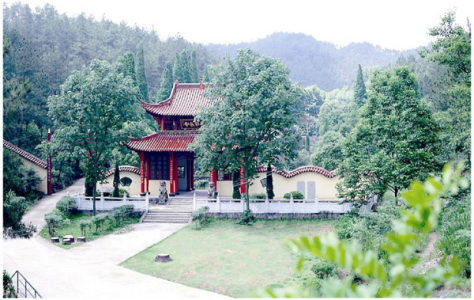
Located in Houzhai Town in the north of the city, Desheng Cliff, also known as Chouyan Cliff, has been since ancient times a wonderful place to have a bird eye’s view thanks to its elevation of 381.7 meters.
The Cliff might not be as precipitous as those renowned mountains, but it’s also breathtaking to climb the winding stone stairs. You will find a lot of stones and caves of grotesque shapes, such as the Shangyan Cave, the Hongyan Cave, the Bat Cave, the Guanshan Mountain and the Nine Dragons for One Pearl Cliff. A huge turtle-shaped rock lying at the top of the mountain shows nature’s creation for a faithful likeness.
The Helingxing Temple at the Desheng Cliff, built in the early Yuan Dynasty to commemorate Vice Minister Hu Ze of the Ministry of War in the Song Dynasty, had attracted a number of worshippers, including the townspeople since the Yuan Dynasty. Many scholars, who came one after another, recorded the breathtaking scenery in their poems.
7.Wangdao Forest Park
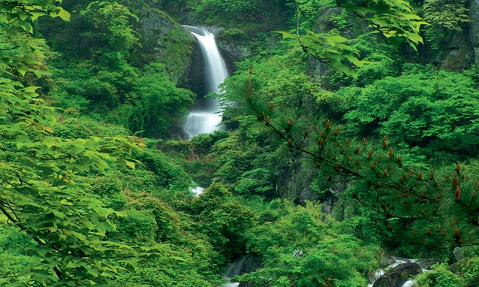
Located in the northwest of Chengxi Community and 20 kilometers from the Yiwu city, Wangdao Forest Park covers an area of 1,312.65 hectares with Chen Wangdao’s Former Residence in the east, Caodaping in the west, Changyan Reservoir in the south and Baishiwan Scenic Spot in the north. Apart from its unique natural landscape, the Park also has quite a few sights showing the age-long local culture and various customs. You could find the Dacaoping where Zhu Yuanzhang, Taizu of the Ming, stationed his troops, Chen Wangdao’s Former Residence and the site of Jinxiao Anti-Japanese Militia’s 8th Team.
Aiming at the “natural and ecological” leisure tourism, the Park has developed the patriotism education project of “Sacred Place of Sparks”. The development of the Park will accelerate the development of Yiwu’s forest resources, promoting the ecological cultural construction with focus on harmonious relations between human and nature, providing a destination of sight-seeing, leisure and vacation, achieving better ecological, economic and social benefits, and realizing the win-win situation of human and nature.
8.Shuanglin Temple
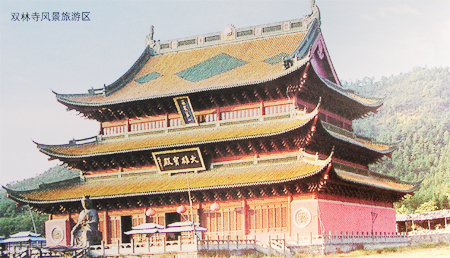
Located in Yunhuangshan Mountain, Fotang Town of Yiwu City, the Shuanglin Temple, established in the Liang Dynasty of the Southern Dynasties, had been a famous land of Buddhism for generations of eminent monks, earning itself the honor of the “Top Grandeur in China”.
For more than 1,500 years, the Shuanglin Temple survived repeated ruins and renovations. In 1997, a main hall was established at the foot of the Yunhuangshan Mountain, 1.6 meters higher than its counterpart in the Lingyin Temple of Hangzhou. The majestic buildings, grand hall and vivid Buddha statues reproduced the old glory of the Temple.
9.Loushantang Scenic Spot

Loushantang, a moon-shaped natural pond, covers an area of more than 50 mu. In the limpid pond lies an island of 400 square meters, an “oasis” named as the “rhino appreciating the moon”. Walking to the southeast of the pond for 300 meters, you will see a place called “Minglong”, which had been the Grave of Qi Jiguang, made by the locals to honor the famous general against Japanese pirates. Unfortunately, the Grave has been destroyed. After planning and development, a temple and a pavilion are established on the island. The Huang Jin Memorial at the back of the mountain has become a holiday site for fishing, rest and boat-rowing.
10.Dishui Cliff

Located in Suxi Town, the Dishui Cliff is also called the Shui Zhu Dong Tian. According to the legend, when Zhu Yuanzhang and his soldiers walked by the Suxi creek, they found the water very sweet with flicking shadows of the bamboos on the mountain, so they called the place Shui Zhu Dong Tian (Fascinating Place with Water and Bamboo). As there is always water dropping from the cliff, it is also called Di Shui Dong Tian (Fascinating Place with Dropping Water). Following the stairs along the cliff, you will find the Hugong Hall with the Statues of Hu Ze and Zong Ze, the latter of which was a famous anti-Jin general in the Song Dynasty. Walking out of the Hugong Hall, you will find the Temple of the Laughing Buddha after a few steps. And if you climbed another 20 meters along the huge cliff in the south, you will see the Jiangxue Pavilion, which was built to commemorate the lectures given here by Shi Yizhui, a successful candidate of the highest imperial examination in the Yuan Dynasty. On the top of the Dishui Cliff, there’s a new 7-floor pagoda, where tourists could enjoy the stone lions and dragons on the pagoda as well as the Buddhist Statues on the inside wall. At each floor, they could also walk around the corridor outside the pagoda, and at the top of the pagoda they could enjoy a bird’s eye.